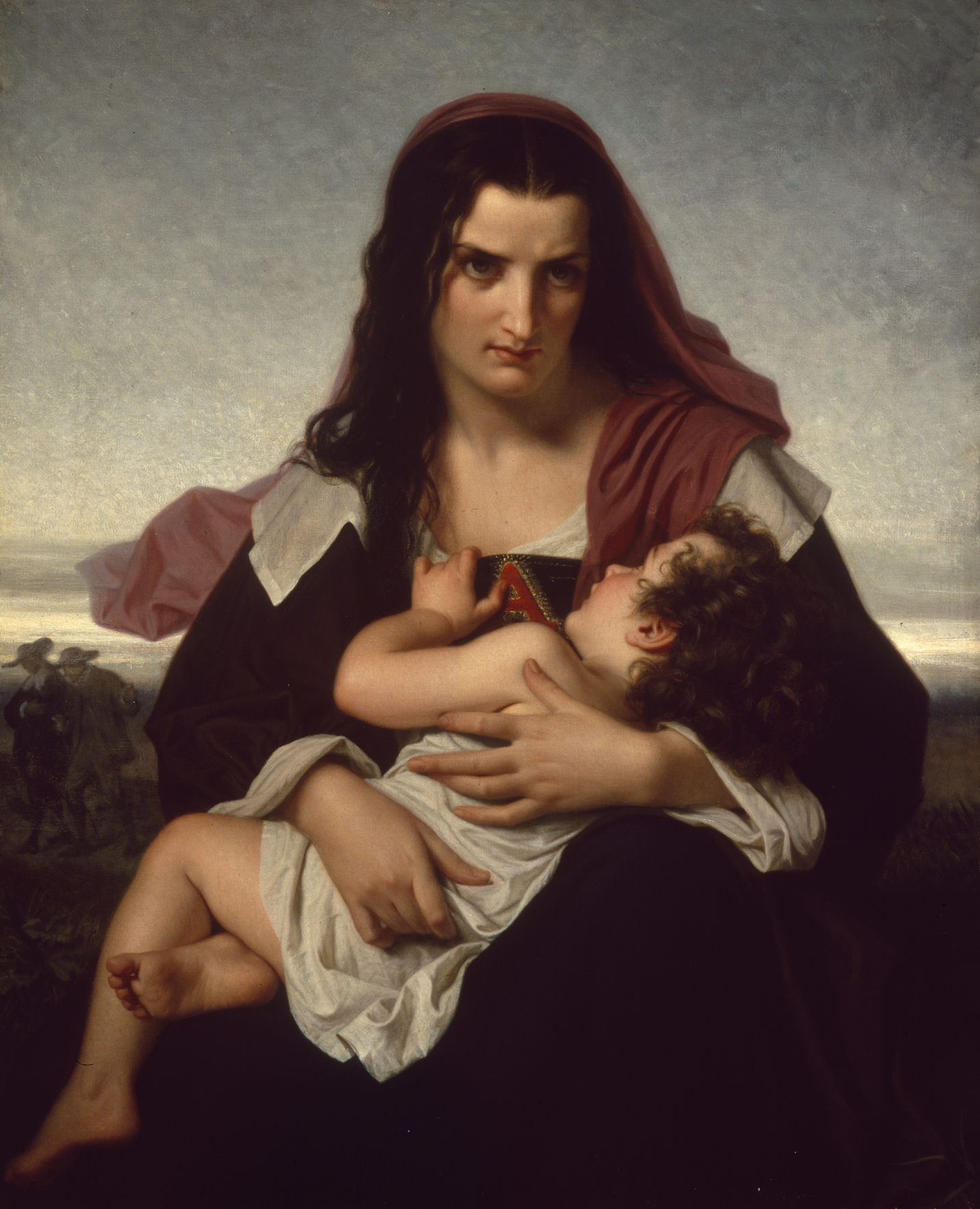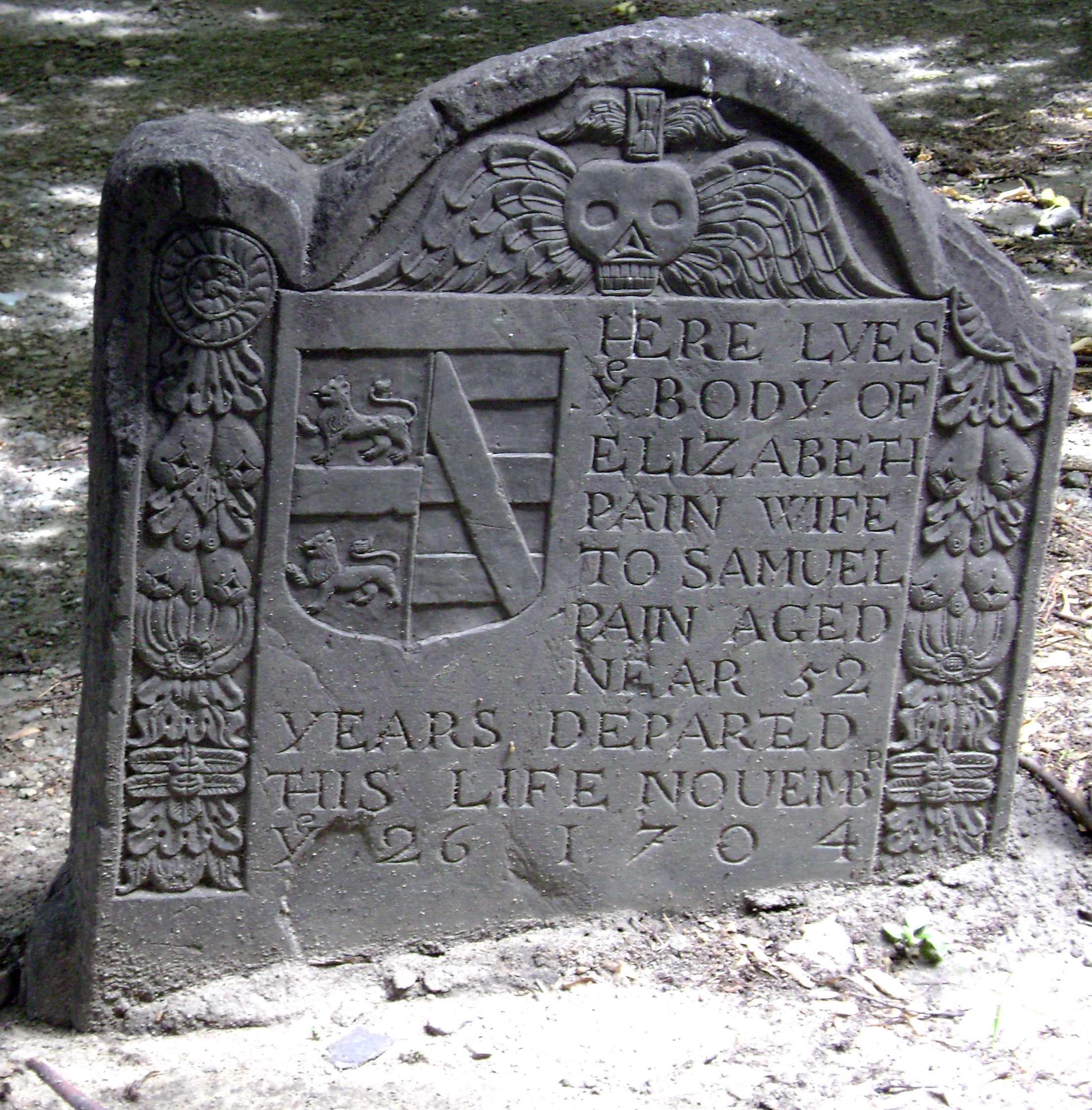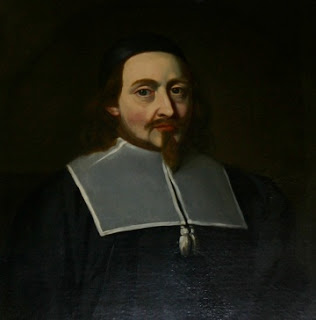|
King's Chapel Burying Ground
King's Chapel Burying Ground is a historic graveyard on Tremont Street, near its intersection with School Street, in Boston, Massachusetts. Established in 1630, it is the oldest graveyard in the city and is a site on the Freedom Trail. Despite its name, the graveyard pre-dates the adjacent King's Chapel (whose first structure was built in 1688); it is not affiliated to that or any other church.Boston Parks and Recreation History King's Chapel Burying Ground was founded in 1630 as the first graveyard in the city of Boston. According to custom, the first interment was that of the land's original owner, Isaac Johnson. It was Boston's only burial site for 30 years (1630–1660). After being unable to locate land elsewhere, in 1686 the newly established local Anglican congregation was allotted land in the graveyard to build King's Chapel. Today there are 505 headstones and 59 footstones remaining from the more than one thousand people buried in the small space since its inception. ... [...More Info...] [...Related Items...] OR: [Wikipedia] [Google] [Baidu] |
Ancient And Honorable Artillery Company Of Massachusetts
The Ancient and Honorable Artillery Company of Massachusetts is the oldest chartered military organization in North America and the third oldest chartered military organization in the world. Its charter was granted in March 1638 by the Great and General Court of Massachusetts Bay and signed by Governor John Winthrop as a volunteer militia company to train officers enrolled in the local militia companies across Massachusetts. With the professionalization of the US Military preceding World War I including the creation of the National Guard of the United States and the federalization of officer training, the company's mission changed to a supportive role in preserving the historic and patriotic traditions of Boston, Massachusetts, and the Nation. Today the Company serves as Honor Guard to the Governor of Massachusetts who is also its Commander in Chief. The headquarters is located on the 4th floor of Faneuil Hall and consists of an armory, library, offices, quartermaster department, comm ... [...More Info...] [...Related Items...] OR: [Wikipedia] [Google] [Baidu] |
Thomas Savage (major)
Thomas Savage (1608 – 14 February 1682) was a soldier and merchant in colonial New England who attained the rank of major during King Philip's War. Life Born in Taunton, Somerset, he was son of William Savage, a blacksmith. Thomas was apprenticed to the Merchant Taylors Company of London on 9 January 1621. He immigrants to Province of Massachusetts Bay, Massachusetts with Sir Henry Vane aboard the ''Planter'' in 1635. He was admitted a freeman of Boston in 1636. The next year he took the side of his mother-in-law, Anne Hutchinson, in the controversy that her teaching excited. He was compelled in consequence to leave the colony, and with William Coddington he and many others founded the settlement of Rhode Island in 1638. Savage was a signer of the Portsmouth Compact. After living there for some time he was permitted to return to Boston. Military career He became a member of the Artillery Company of Massachusetts in 1637. In 1639 he was elected as the company's second serg ... [...More Info...] [...Related Items...] OR: [Wikipedia] [Google] [Baidu] |
The Scarlet Letter
''The Scarlet Letter: A Romance'' is a work of historical fiction Historical fiction is a literary genre in which the plot takes place in a setting related to the past events, but is fictional. Although the term is commonly used as a synonym for historical fiction literature, it can also be applied to other ty ... by American author Nathaniel Hawthorne, published in 1850. Set in the Puritan Massachusetts Bay Colony during the years 1642 to 1649, the novel tells the story of Hester Prynne, who conceives a daughter with a man to whom she is not married and then struggles to create a new life of repentance and dignity. Containing a number of religious and historic allusions, the book explores themes of Legalism (theology), legalism, sin and Guilt (emotion), guilt. ''The Scarlet Letter'' was one of the first mass-produced books in the United States. It was popular when first published and is considered a classic work of American literature. The novel has inspired numerous film, te ... [...More Info...] [...Related Items...] OR: [Wikipedia] [Google] [Baidu] |
Hester Prynne
Hester Prynne is the protagonist of Nathaniel Hawthorne's 1850 novel ''The Scarlet Letter''. She is portrayed as a woman condemned by her Puritan neighbors. The character has been called "among the first and most important female protagonists in American literature". Fictional character overview A resident of Colonial America, Hester is sent ahead to the "New World" by her husband, who later assumes the name of Roger Chillingworth, as he has some business to finish before he can join her. After he is shipwrecked and captured by Native Americans and presumed dead, Hester continues to live her life as a seamstress in the town. She looks to the local pastor Arthur Dimmesdale for comfort; somewhere along the way passion emerges, culminating in the conception and subsequent birth of their child, Pearl. Because Hester has no husband with her, she is imprisoned, convicted of the crime of adultery, and sentenced to be forced to wear a prominent scarlet letter 'A' for the rest of her life. ... [...More Info...] [...Related Items...] OR: [Wikipedia] [Google] [Baidu] |
Elizabeth Pain
Elizabeth Pain (c. 1652 – 26 November 1704), sometimes spelled Elizabeth Paine or Elisabeth Payne, was a settler in colonial Boston who was brought to trial after the death of her child. She was acquitted of the murder charge but found guilty of negligence, fined, and flogged. According to some writers and by popular tradition, aspects of Pain's life and her gravestone are considered an inspiration for the life and grave of character Hester Prynne in the novel ''The Scarlet Letter'' by Nathaniel Hawthorne.Shackleton, Robert (1916). ''The Book of Boston.'' The Penn Publishing Company, p. 11Barlowe, Jamie (2000). The Scarlet Mob of Scribblers: Rereading Hester Prynne Southern Illinois University Press, Biography Pain was a spinster who had a child out of wedlock, considered evidence of illegal fornication. She later married Samuel Pain. On March 6, 1692, the child died. Pain was brought to trial for murder in 1693. She was found not guilty of murder but was found guilty of neg ... [...More Info...] [...Related Items...] OR: [Wikipedia] [Google] [Baidu] |
John Oxenbridge
John Oxenbridge (30 January 1608 – 28 December 1674) was an English Nonconformist divine, who emigrated to New England. Life He was born at Daventry, Northamptonshire, and was educated at Emmanuel College, Cambridge, and Magdalen Hall, Oxford (B.A. 1628, M.A. 1631). As tutor of Magdalen Hall he drew up a new code of articles referring to the government of the college. He was, as a consequence, deprived of his office in May 1634, by William Laud.''Concise Dictionary of National Biography'' After leaving the Hall, Oxenbridge married his first wife, Jane Butler. He began to preach, with a similar disregard for constituted authority. His wife being a scholar in the profound points of theology, he commonly got her opinion upon a text before he preached it. After voyages to the Bermudas he returned to England (1641), and after exercising an itinerant and unattached ministry settled for some months in Great Yarmouth and then at Beverley. During the Civil War he was lecturer at St. Ma ... [...More Info...] [...Related Items...] OR: [Wikipedia] [Google] [Baidu] |
John Leverett
John Leverett (baptized 7 July 1616 – 16 March 1678/79In the Julian calendar, then in use in England, the year began on 25 March. To avoid confusion with dates in the Gregorian calendar, then in use in other parts of Europe, dates between January and March were often written with both years. Dates in this article are in the Julian calendar unless otherwise noted.) was an English colonial magistrate, merchant, soldier and the penultimate governor of the Massachusetts Bay Colony. Born in England, he migrated to Massachusetts as a teenager. He was a leading merchant in the colony, and served in its military. In the 1640s he went back to England to fight in the English Civil War. He was opposed to the strict Puritan religious orthodoxy in the colony. He also believed the colonial government was not within the power of the English crown and government, a politically hardline position that contributed to the eventual revocation of the colonial charter in 1684. His business and mil ... [...More Info...] [...Related Items...] OR: [Wikipedia] [Google] [Baidu] |
Robert Keayne
Robert Keayne (1595 – March 23, 1656) was a prominent public figure in 17th-century Boston, Massachusetts. He co-founded the Ancient and Honorable Artillery Company of Massachusetts and served as speaker of the House of the Massachusetts General Court. Keayne was a prosperous London merchant who joined his fellow Puritans in Boston where he built a fortune. He was accused of unfair business practices, and brought before the legislature, the Massachusetts General Court. It found Keayne guilty, fined him, and compelled him to confess his "sins." He proclaimed his innocence, and justified his actions in elaborate detail in his will. It bequeathed £2500 to Boston, to upgrade the infrastructure with an aqueduct, relieve the city's poor, and fund the First Town-House, a grand public meeting place. He attached a condition to the effect that the bequest would become void if there were any legal actions against his estate; there were none. Biography Keayne was born in Windsor ... [...More Info...] [...Related Items...] OR: [Wikipedia] [Google] [Baidu] |
Ralph Waldo Emerson
Ralph Waldo Emerson (May 25, 1803April 27, 1882), who went by his middle name Waldo, was an American essayist, lecturer, philosopher, abolitionist, and poet who led the transcendentalist movement of the mid-19th century. He was seen as a champion of individualism and a prescient critic of the countervailing pressures of society, and his ideology was disseminated through dozens of published essays and more than 1,500 public lectures across the United States. Emerson gradually moved away from the religious and social beliefs of his contemporaries, formulating and expressing the philosophy of transcendentalism in his 1836 essay "Nature". Following this work, he gave a speech entitled "The American Scholar" in 1837, which Oliver Wendell Holmes Sr. considered to be America's "intellectual Declaration of Independence."Richardson, p. 263. Emerson wrote most of his important essays as lectures first and then revised them for print. His first two collections of essays, '' Essays: Firs ... [...More Info...] [...Related Items...] OR: [Wikipedia] [Google] [Baidu] |
William Emerson (minister)
William Emerson (May 6, 1769 – May 12, 1811) was one of Boston's leading citizens, a liberal-minded Unitarian minister, pastor to Boston's First Church and founder of its Philosophical Society, Anthology Club, and Boston Athenaeum, and father to Ralph Waldo Emerson. Biography Emerson was born in Concord, Massachusetts on 6 May 1769, the fifth born and only son of William and Phoebe (Bliss) Emerson. Family and early life William Emerson's grandfather, Joseph Emerson was a minister, as was his father, William Emerson Sr. Emerson's father built and inhabited The Old Manse at Concord. He was the chaplain to the Provincial Congress when it met at Concord in October 1774, and he was a chaplain to the Continental Army when war had begun. William Emerson Sr. died of camp fever while on campaign in 1776, when his son William Emerson was 7 years old. William Emerson Jr. married Ruth Haskins on 25 October 1796 in Boston. She was the daughter of John Haskins of Boston. The Emersons ha ... [...More Info...] [...Related Items...] OR: [Wikipedia] [Google] [Baidu] |
William Dawes
William Dawes Jr. (April 6, 1745 – February 25, 1799) was one of several men who in April 1775 alerted colonial minutemen in Massachusetts of the approach of British army troops prior to the Battles of Lexington and Concord at the outset of the American Revolution. For some years, Paul Revere had the most renown for his ride of warning of this event. Childhood Dawes was born in Boston, Massachusetts, on April 6, 1745, to William and Lydia Dawes (née Boone), and baptized at Boston's Old South Church. He became a tanner and was active in Boston's militia. On May 3, 1768, Dawes married Mehitable May, the daughter of Samuel and Catherine May (née Mears). The ''Boston Gazette'' noted that for his wedding, he wore a suit entirely made in North America. At the time, Whigs were trying to organize a boycott of British products in order to pressure Parliament to repeal the Townshend Acts. Role in Boston's militia On April 8, 1768, Dawes was elected as a member of the Ancien ... [...More Info...] [...Related Items...] OR: [Wikipedia] [Google] [Baidu] |






